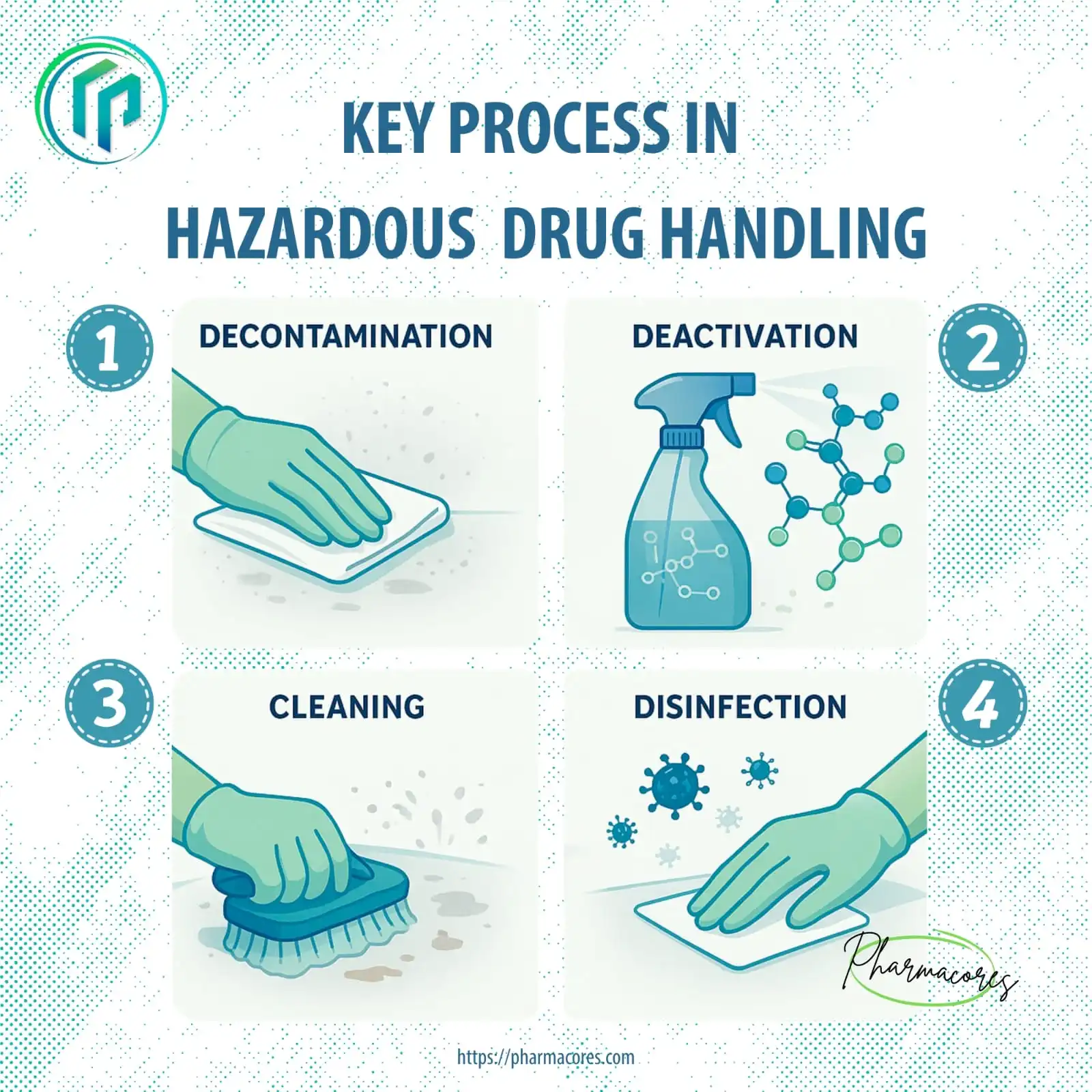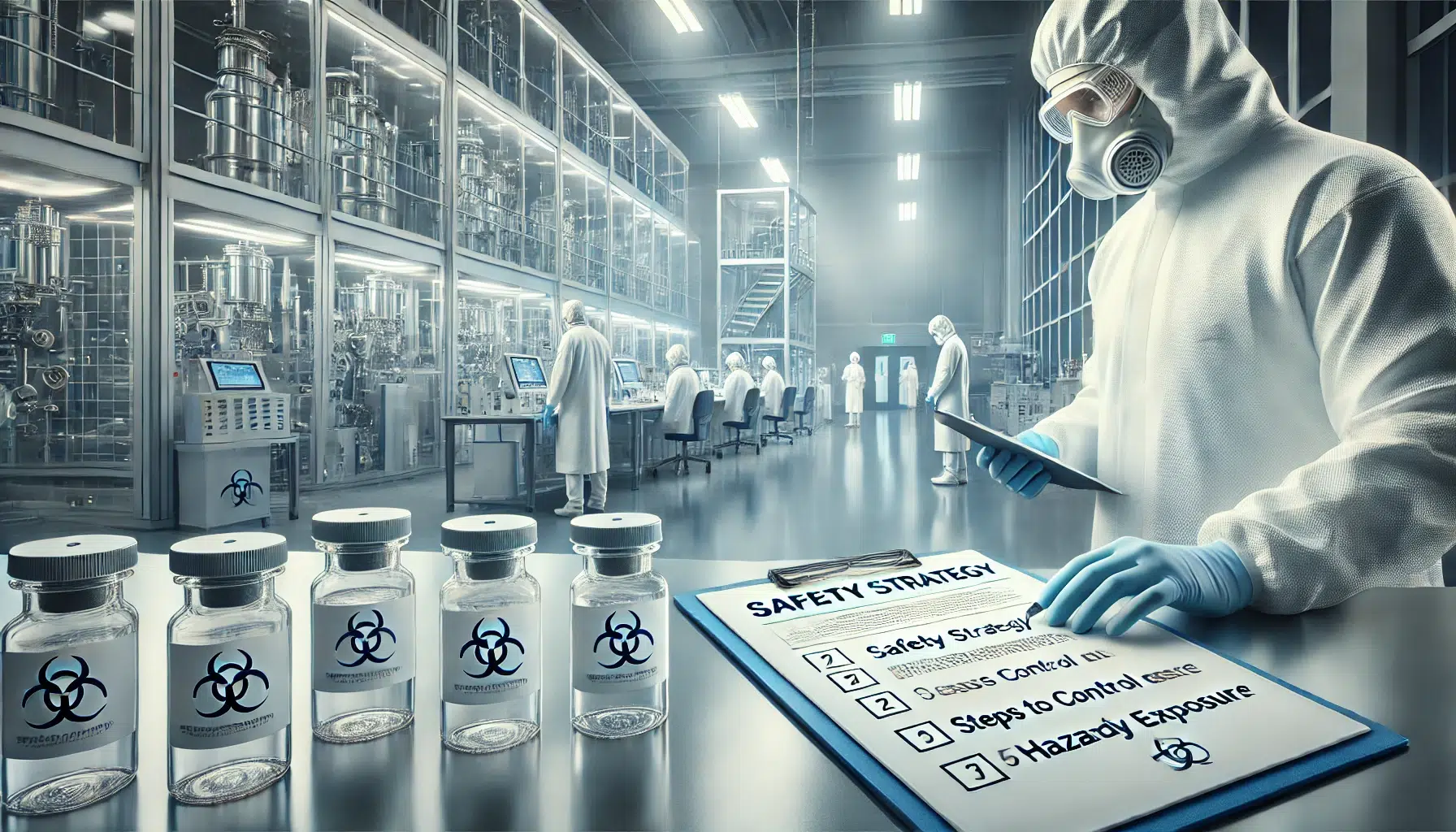Occupational exposure of workers at healthcare institutes is exposed to unintentional entry of hazardous drugs into the body via different routes; namely: dermal or mucosal absorption, inhalation, eye contact, mouth contact with contaminated hands &/or injections.
Such exposure poses serious health risks, as hazardous drugs may cause carcinogenicity, reproductive toxicity, organ toxicity, teratogenicity, or genotoxicity, as defined by the National Institute for Occupational Safety and Health (NIOSH).
Routes of Occupational Exposure
Potential routes of occupational exposure are mainly based on the activity conducted. The following table describes how the route of exposure differs with different conducted activities
Table 1: Potential routes for exposure, the healthcare workers involved, and hazardous drug activities
| Route of exposure | Healthcare worker involved | Activity conducted | |
| 1 | Dermal contact | Pharmacy;nursing;Warehouse; environmental service; technician or transport staff | -Maintenance activities are done for equipment and devices that could be contaminated. -Receiving &/or transporting of hazardous products. -Contact with a contaminated spill or leakage. -Contact with residues of hazardous products present on the containers&/or work surfaces. -Repackaging of capsules or tablets. -Handling of clothing or dressings that are contaminated with the body fluids of patients. -During the process of decontamination, deactivating cleaning, or disinfecting contaminated surfaces. -Collection and disposal of waste contaminated with hazardous traces. |
| 2 | Eye contact | Pharmacy, nursing or nursing aid or care providers (in case of patients at home) | -Preparing an IV set, performing special procedures in daily hospital tasks such as intraoperative injection, intraperitoneal injection, or bladder instillation, which are high-risk procedures |
| 3 | Inhalation | Pharmacy ; nursing | -Weighing or mixing of powder components. -Crushing of tablets or opening hard gelatin capsules. -Generation of aerosols or vapors during the administration of hazardous drugs. -Reconstitution of lyophilized hazardous drugs. |
| 4 | Percutaneous exposure | Nursing | -Preparing an IV set. -Performing special procedures in daily hospital tasks such as intraoperative injection, intraperitoneal injection, or bladder instillation, which are high-risk procedures. |
| 5 | Mouth contact or ingestion | Healthcare workers | -Foods or drinks within hazardous classified areas |
Definitions of Key Processes
- A hazardous drug is any drug that is identified by NIOSH as causing carcinogenicity, reproductive toxicity, organ toxicity, teratogenicity or genotoxicity
- Decontamination is the process of inactivating, neutralizing, or removing hazardous drug contaminants on the work surface.
- Deactivation is the process of handling contaminated areas with a chemical, heat, ultraviolet, or any other substance that will alter the area into a less hazardous area.
- Disinfection is the process of inhibiting or destroying any microorganism.

Risk Assessment and Dosage Forms
Some dosage forms of hazardous drugs may not have a significant risk impact of occupational exposure. These dosage formulations are solid intact medications that are directly administered by the patient without any modification. That is why during the risk assessment of potential occupational exposure, the following must be questioned at least:
- Type of the hazardous drug in terms of the risk imposed (antineoplastic, non-antineoplastic, organ toxicity, or reproductive risk).
- Dosage form: Certain formulations (e.g., powders and aerosols) are more likely to generate exposure risks.
- Presence of risk exposure: Includes factors such as aerosol generation, drug residue, or liquid spills.
- Packaging form: Bulk packaging or poorly sealed containers may increase the risk of contamination.
- Manipulating or way of handling: Crushing, reconstituting, or transferring drugs can significantly heighten exposure risks.
Responsibilities of Healthcare Workers
Healthcare workers handling hazardous drugs are obliged to understand and follow the necessary work practices and potential precautions. Continuous evaluation of such procedures is a must to prevent harm to themselves or the patients. Along with minimizing exposure to personnel and to lessen contamination, which may arise in the workplace and the patient-care environment.
Surface Contamination: A Persistent Risk
Surface contamination is a potential risk to healthcare workers. Adhering to proper controls and following appropriate procedures that comply with the applicable regulations and standards are preventive measures to minimize occupational exposure.
Regulations and Standards
Adhering to applicable regulations and standards is vital for minimizing occupational exposure to hazardous drugs. These guidelines are often provided by organizations such as:
- NIOSH: Offers recommendations on safe handling practices for hazardous drugs.
- USP Chapter <800>: Outlines standards for handling hazardous drugs to protect healthcare workers and patients.
- Occupational Safety and Health Administration (OSHA): Provides guidelines for workplace safety, including hazardous drug handling.

